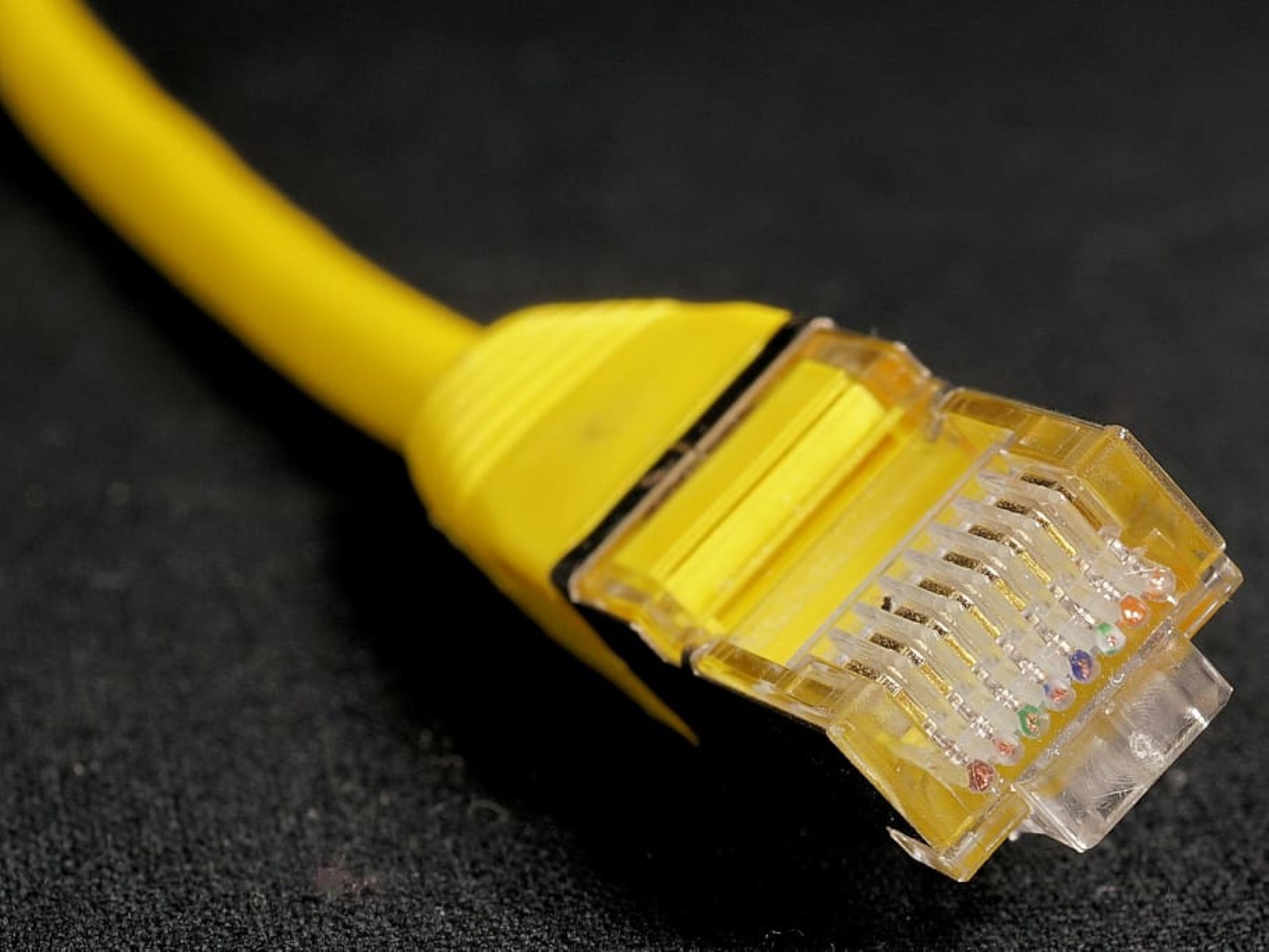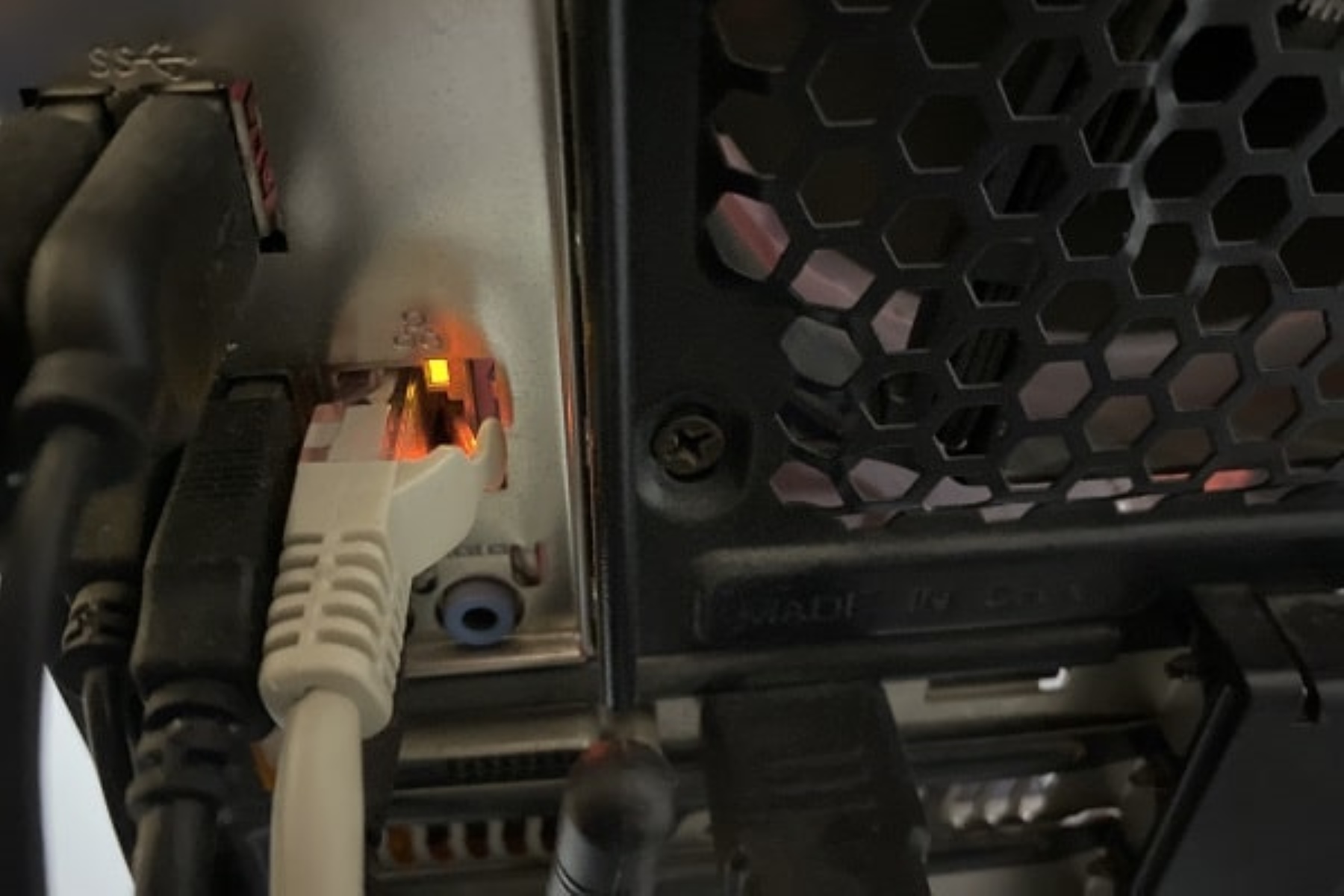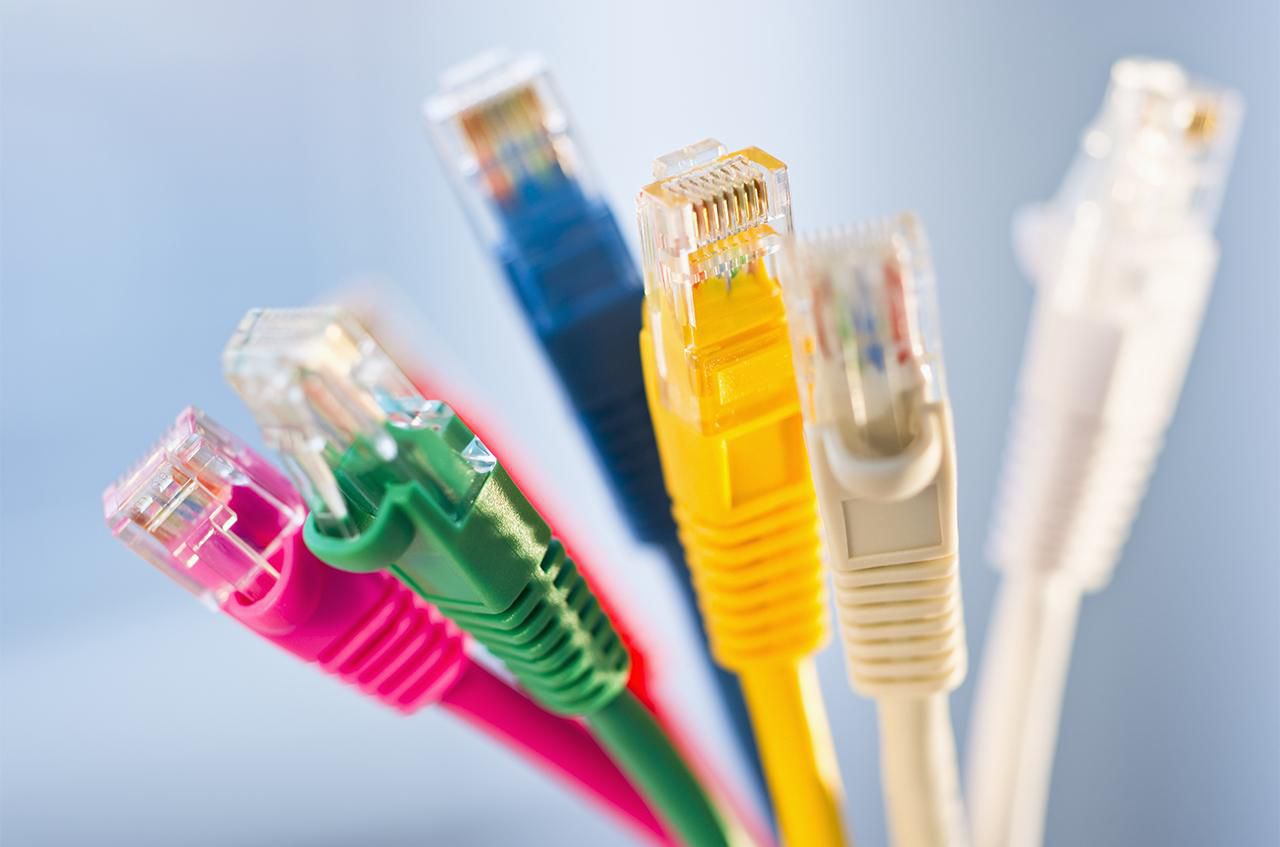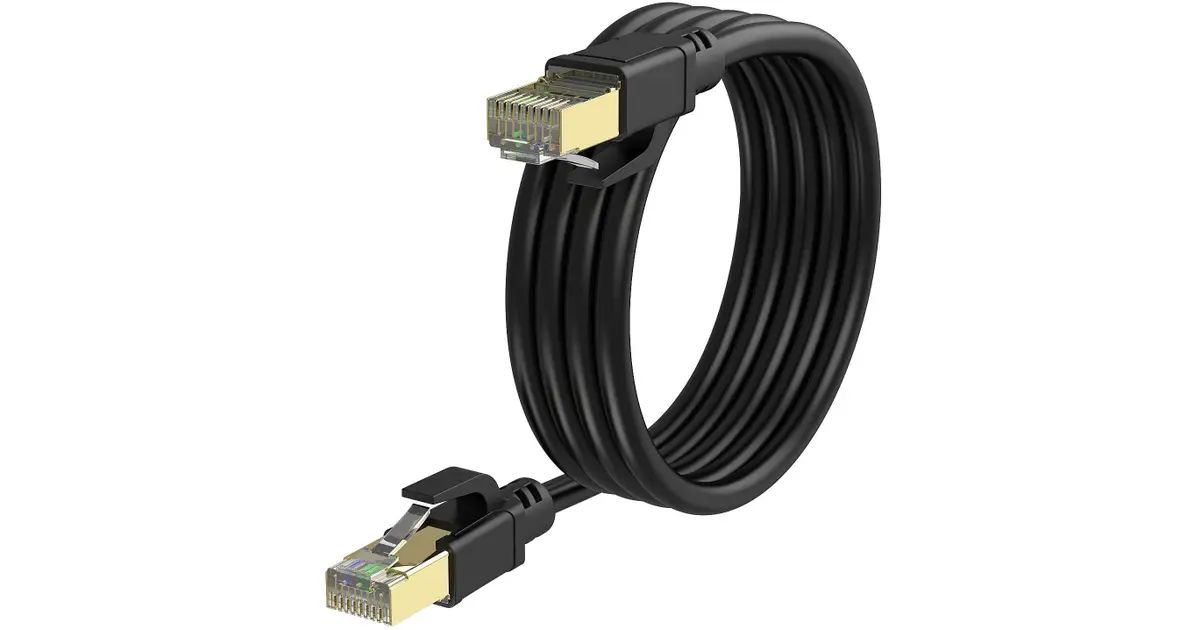Introduction
An Ethernet cable is a type of network cable that is commonly used to connect devices in a local area network (LAN). It allows for the transmission of data between different devices, such as computers, routers, switches, and modems. Ethernet cables are essential for establishing a wired internet connection and are widely used in both home and business networks.
These cables have become the standard for high-speed internet connections due to their reliability and speed capabilities. They are able to transmit data at fast speeds and provide a stable and secure connection for various applications, including browsing the web, streaming content, online gaming, and transferring large files. Ethernet cables offer a more consistent and reliable connection compared to wireless connections, making them preferable in certain situations.
There are several types of Ethernet cables available, each with different capabilities and specifications. The most common types include Cat5, Cat5e, Cat6, and Cat6a cables. These cables differ in terms of the maximum bandwidth they can support and their ability to reduce interference and crosstalk. The choice of Ethernet cable depends on the specific requirements of the network and the devices that will be connected.
One particular type of Ethernet cable that may catch your attention is the yellow Ethernet cable. While most Ethernet cables come in various colors, such as blue, grey, and black, the yellow Ethernet cable stands out with its vibrant hue. But what exactly is a yellow Ethernet cable used for? In the following sections, we will explore the uses and applications of a yellow Ethernet cable, highlighting its unique features and potential benefits.
What is an Ethernet Cable?
An Ethernet cable, also known as a network cable, is a type of cable that is used to connect devices together in a local area network (LAN). It is a physical medium through which data is transmitted from one device to another. Ethernet cables are commonly made with copper wires that are twisted together to reduce interference and ensure reliable data transmission.
These cables use a standardized set of protocols called Ethernet to establish a connection between devices. Ethernet is a networking technology that enables devices to communicate with each other and share resources. It defines how data should be packaged, addressed, transmitted, and received by networked devices.
Ethernet cables come in different categories, each designed to support different speeds and performance levels. The most commonly used categories are Cat5, Cat5e, Cat6, and Cat6a. The category of the cable determines the maximum bandwidth it can support and the distance over which it can transmit data without degradation.
Ethernet cables have connectors on each end, usually known as RJ-45 connectors, which resemble oversized telephone connectors. These connectors ensure a secure and reliable connection between devices. One end of the cable is plugged into the Ethernet port on a device, such as a computer or a router, while the other end is connected to the corresponding port on another device.
One of the primary advantages of using Ethernet cables is their speed and reliability. Unlike wireless connections, which can be susceptible to signal interference and fluctuations in speed, Ethernet cables provide a more consistent and stable connection. This makes them ideal for applications that require high data transfer rates, such as online gaming, streaming high-definition videos, and transferring large files.
Overall, Ethernet cables play a crucial role in networking by enabling devices to communicate and share resources. They provide a reliable and secure connection, making them an essential component of any wired network infrastructure.
Types of Ethernet Cables
Ethernet cables are available in various types, each with different specifications and capabilities. The choice of ethernet cable depends on factors like bandwidth requirements, distance limitations, and the desired level of interference protection. Let’s explore the most common types of ethernet cables:
- Cat5: Cat5 cables were widely used in the past but are now considered outdated. They are capable of transmitting data at speeds up to 100 Mbps and have a maximum length of 100 meters. Cat5 cables are suitable for basic networking needs but may not be ideal for high-speed applications.
- Cat5e: Cat5e cables (Cat5 enhanced) are an improved version of Cat5 cables. They have better crosstalk and interference resistance, allowing for data transmission speeds up to 1 Gbps. Cat5e cables also have a maximum length of 100 meters and are backward compatible with Cat5.
- Cat6: Cat6 cables are designed to support higher bandwidths and faster data transfer rates compared to Cat5e. They can transmit data at speeds up to 10 Gbps and have improved interference protection and reduced crosstalk. Cat6 cables are also backward compatible with Cat5e and Cat5, making them a popular choice for both residential and commercial networks.
- Cat6a: Cat6a (Cat6 augmented) cables offer further improvements in performance and bandwidth compared to Cat6 cables. They can support data transmission speeds up to 10 Gbps at longer distances, up to 100 meters. Cat6a cables are shielded, providing enhanced protection against interference and crosstalk.
It is important to note that the speed and performance of an ethernet cable depend not only on its category but also on other factors, such as the quality of the cable and the network equipment it is connected to. Additionally, using higher category cables may not necessarily result in faster speeds if the network devices or infrastructure do not support those higher speeds.
When selecting an ethernet cable, consider your specific networking needs, the devices you are connecting, and the environment in which the cables will be installed. Taking these factors into account will help ensure optimal performance and reliable connectivity for your network.
What is a Yellow Ethernet Cable?
A yellow ethernet cable is a type of network cable that stands out due to its vibrant yellow color. While most ethernet cables come in standard colors like blue, grey, or black, the use of a yellow cable can serve various purposes, including identification and organization in networking setups.
The color of the ethernet cable does not affect its performance or functionality; it is purely a visual distinction. The yellow color can help differentiate or identify specific network connections or devices, especially in complex networking environments with multiple cables. It can make it easier to trace and identify specific cables during installation, troubleshooting, or maintenance procedures.
Additionally, the use of a yellow ethernet cable can aid in proper cable management and organization. It allows users to visually distinguish between different types of connections, ensuring efficient management and allocation of resources within a network infrastructure. For example, a yellow cable might be designated for connections to specific equipment or devices, such as network switches or servers.
While yellow ethernet cables serve primarily as visual identifiers or organization tools, it is important to note that they still need to meet the required specifications for proper network functionality. The category and quality of the cable are crucial factors to consider, ensuring optimal performance and data transmission. So, when choosing a yellow ethernet cable, ensure it meets the necessary standards for the intended network setup.
It is worth mentioning that the choice to use a yellow ethernet cable is entirely optional and subjective. Some network administrators or individuals may find the yellow color more visually appealing or useful, while others may prefer the more traditional colors. Ultimately, the functionality and performance of the ethernet cable are what truly matter.
Uses of a Yellow Ethernet Cable
A yellow ethernet cable, despite its unique color, serves the same purpose as any other ethernet cable – to establish a wired connection between devices in a network. The color does not affect the functionality or performance of the cable. However, the use of a yellow ethernet cable can have specific practical applications and benefits. Let’s explore some of the common uses of a yellow ethernet cable:
- Identification: The most noticeable use of a yellow ethernet cable is for easy identification. In complex network setups where multiple cables are used, the yellow color stands out among traditional colors, such as blue or grey. It can help differentiate specific connections or devices, making it easier to trace and identify cables for installation, troubleshooting, or maintenance purposes.
- Organization: Using a yellow cable can aid in cable management and organization within a network infrastructure. It allows for visual differentiation and categorization of different types of connections. For example, a yellow cable could be designated for connections to critical network equipment, such as servers or switches, ensuring efficient allocation of resources and easy identification of key components.
- Preventing Cable Mix-ups: In environments with multiple networks or interconnected systems, using a yellow ethernet cable can help prevent cable mix-ups. By using a distinct color, it reduces the chance of accidentally connecting cables to the wrong devices or networks, thereby eliminating potential configuration and connectivity issues.
- Temporary or Hazardous Installations: Yellow ethernet cables are sometimes used in temporary or hazardous installations. The color can serve as a visual reminder that the cable is not part of the permanent network infrastructure but rather a temporary connection. It can also indicate the presence of potentially hazardous or sensitive connections, such as connections to power over Ethernet (PoE) devices or devices with higher voltage requirements.
- Visual Appeal: Lastly, the yellow color can simply be a matter of personal preference or visual appeal. Some individuals or organizations may find the yellow ethernet cable more aesthetically pleasing or compatible with their existing color schemes or branding guidelines.
While the uses of a yellow ethernet cable may vary depending on the specific networking setup and requirements, its primary purpose remains the same – to establish a reliable wired connection between devices. The color of the cable can provide additional functionality in terms of identification, organization, and visual appeal, making it a practical choice for certain network configurations or preferences.
Conclusion
Ethernet cables are crucial components in establishing wired connections in local area networks (LANs). They enable reliable and fast data transmission between devices, ensuring stable internet connections for various applications. While ethernet cables are typically available in standard colors like blue, grey, or black, the use of a yellow ethernet cable can offer unique advantages in terms of identification, organization, and visual appeal.
A yellow ethernet cable serves the same purpose as any other ethernet cable, providing a wired connection between devices. The primary benefit of a yellow cable lies in its visibility. In complex network setups with multiple cables, the vibrant yellow color stands out and helps differentiate specific connections or devices. This facilitates easy identification during installation, troubleshooting, or maintenance procedures.
Additionally, the use of a yellow ethernet cable aids in cable management and organization within a network infrastructure. It allows for visual differentiation of connections and can designate specific cables for critical network equipment, ensuring efficient allocation of resources and easy identification of key components.
Yellow ethernet cables can also help prevent cable mix-ups in environments with multiple networks or interconnected systems. The distinct color reduces the chance of accidentally connecting cables to the wrong devices, minimizing configuration and connectivity issues.
In certain cases, a yellow ethernet cable may be used in temporary or hazardous installations. The yellow color can serve as a visual reminder that the cable is not part of the permanent network infrastructure or indicate connections to potentially hazardous or sensitive devices.
Ultimately, the choice of a yellow ethernet cable is subjective and optional. While it offers practical advantages in terms of identification and organization, it is important to ensure that the cable meets the necessary specifications and standards for optimal performance. Whether it’s a yellow, blue, or black cable, the functionality, reliability, and performance of the ethernet cable remain the key considerations in setting up a robust and efficient network.

























